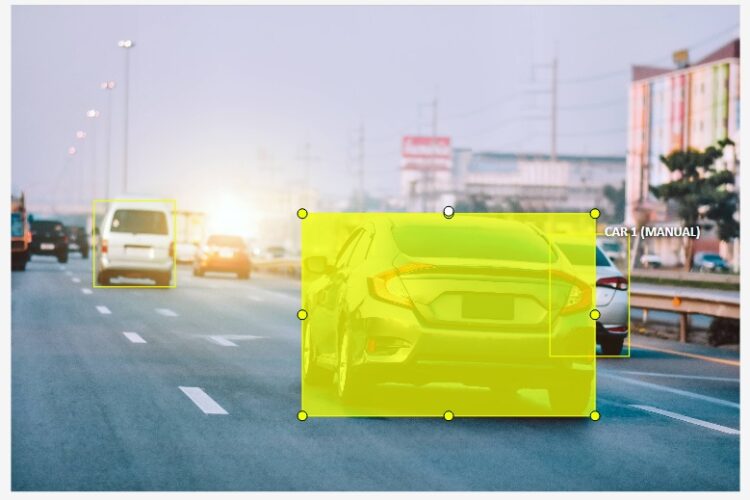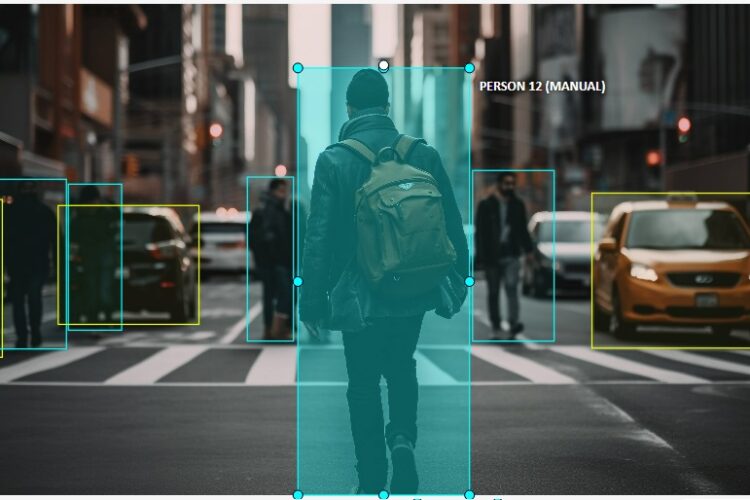What is Bounding Box Image Labeling? How It Helps the Autonomous Industry
Table of Contents
ToggleWhat is Bounding Box Image Labeling? How It Helps the Autonomous Industry
Bounding box image labeling is a vital annotation technique in computer vision, involving the placement of rectangular boxes around objects in an image and assigning corresponding labels. This method is widely used to create structured datasets for training machine learning models, enabling them to identify and interpret objects in visual data accurately. Its simplicity and efficiency make it one of the most popular annotation techniques in industries like eCommerce, healthcare, and especially the autonomous industry.
How Does Bounding Box Image Labeling Work?
Bounding box annotation typically involves the following steps:
- Identifying Objects: Objects of interest in an image are selected for annotation.
- Drawing Rectangles: Rectangular boxes are drawn around these objects to outline their boundaries.
- Assigning Labels: Each box is tagged with a label corresponding to the object’s category, such as “car,” “pedestrian,” or “traffic light.”
- Validation: Annotated images are reviewed to ensure precision and correctness.
Modern tools incorporate AI assistance, auto-labeling features, and collaborative workflows to streamline the annotation process.
Why is Bounding Box Labeling Important?
Bounding box labeling creates structured data that teaches machine learning algorithms to detect, recognize, and classify objects. The accuracy of these annotations directly affects the model’s performance in real-world applications.
The Role of Bounding Box Labeling in the Autonomous Industry
The autonomous industry, especially self-driving cars, heavily depends on bounding box labeling for:
- Object Detection and Tracking: Bounding boxes help autonomous systems recognize objects like vehicles, pedestrians, and animals in real-time and track their movements within a scene.
- Navigation and Path Planning: Labeled data allows vehicles to navigate dynamic environments by identifying road boundaries, obstacles, and safe zones.
- Safety Enhancements: Accurate labeling ensures that self-driving systems can detect hazards, calculate safe distances, and prevent accidents by responding promptly.
- Behavior Prediction: Bounding box annotations allow models to predict the movement of objects, such as a pedestrian crossing the street or a vehicle changing lanes.
- Training AI Models: High-quality annotated datasets provide the foundation for deep learning models used in object detection and semantic understanding.
- Traffic Flow Analysis: Beyond self-driving cars, bounding box annotations enable better traffic management and urban planning by analyzing real-world road usage patterns.
Advanced Applications in Autonomous Systems
While traditional bounding boxes focus on 2D annotations, the autonomous industry is moving towards 3D bounding boxes for more detailed insights. These capture depth information, which is critical for determining object distances and sizes. Paired with LiDAR and radar data, 3D bounding boxes allow autonomous systems to perform more sophisticated tasks, such as parking assistance and lane detection.
Challenges in Bounding Box Labeling
- Edge Cases: Handling objects that are partially obscured or overlapping requires advanced expertise and tools.
- Time-Intensive: High-quality labeling requires meticulous attention to detail, making it a labor-intensive process.
- Scalability: Annotating massive datasets for training requires automation and efficient tools to maintain cost-effectiveness.
The Future of Bounding Box Labeling in the Autonomous Industry
As the autonomous industry evolves, so does the technology behind image labeling. Emerging trends include:
- AI-Driven Automation: Automating annotations to reduce manual efforts.
- Integration with AR and VR: For real-time simulations and testing.
- Improved Tools: Faster and more intuitive labeling tools to handle larger datasets.
Conclusion
Bounding box image labeling is a fundamental yet transformative process driving advancements in the autonomous industry. From enabling object detection to enhancing safety, its applications are vast and indispensable. As innovations like 3D annotations and automated workflows mature, the role of bounding box labeling in shaping the future of autonomy will only grow. By bridging the gap between raw visual data and actionable insights, bounding box labeling empowers autonomous systems to function seamlessly, fostering a safer and more efficient transportation ecosystem.



